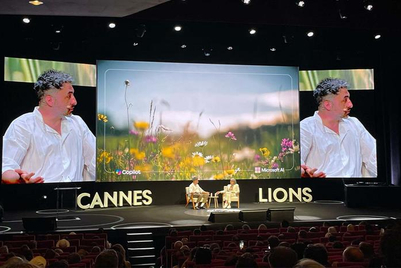
Michele Samoulides, senior manager, Worldwide Reward & Recognition Programs at Microsoft, talks to CEI about incorporating authenticity into incentive programs.
How do you define authenticity?
I think the bottom line to being authentic is to be genuine. Asking questions, being open to diversity, being inclusive.
How do you manage the varying definitions of authenticity when you design programs for many nationalities and cultures?
Depending on where we’re taking the incentive for that year, I rely very heavily on my local partners to help me create a program. That would include things like what activities we offer, what type of food and beverage they’re offering, the type of entertainment, and what they’re experiencing while they’re at an event. That’s the event side of things.
For the people side, I try to pay attention locally. So if anything, we just start with all the different foods that they eat. What we try to do is highlight where we’re at and try the local cuisine first. But we do tend to do more buffets rather than plated meals so that we can give more choice. It’s all about giving people choices. You have to be flexible.
We don’t give them everything they’ll already have if they were at home. But you also have to offer what’s comfortable for them. It can be as easy as steamed rice because rice is a staple and they’re used to it. Or having chopsticks. But again, it’s being flexible. It’s thinking about what would help them feel comfortable in the destination.
I think you’re also missing out if you’re not really looking to the locals to help you understand what’s the right thing to do. Culturally, what are the do’s and don’ts? So that you’re melding but you’re also being appreciative and thinking about what these cultures. I think it’s important to ask questions, communicate, be open, be flexible, and realise there’s going to be a big difference in diversity.
How do you manage emotional experiences that may vary among delegates?
It’s very much a personal thing, so there are things you can offer where the attendee can choose whether it’s a choice of activity, or choice of a gift. I find that more and more where you can build choices it helps to balance that personal experience, and ultimately, the authentic experience.

How do you sidestep cultural stereotypes?
I do a program in the Americas where we go to Hawaii a lot. It’s all about the luau. Everybody thinks there should be a luau. It’s a stereotype that also factors into what’s considered ‘authentic’ for a particular person, and it’s a very personal experience for everyone. But generally, if I create an event, I’m going to try and work with my local partners to know what’s real or what’s a stereotype.
How do you scale authenticity across large groups?
Our Asia group is over 500 people and the Americas group is over 900. They’re really large so it’s hard to make it very individualised. So I always look at it as more regionalised in terms of what countries are participating in that particular event. And then I think about where are we taking them and try to meld the two together.
Is food an important part of incorporating authenticity?
Food is huge. We always try and cook a specialty item or maybe they make wine. In Lisbon, we had a special wine selection from all the local winemakers.
Anything involving the senses is important. More than ever, it’s about what they can experience versus just what they can just watch. Can they be included in it? Can someone teach them to do a local dance? Or can you learn how to fold a flower? Anything that you can do where there’s an experiential element to that, we’re finding that it’s more and more the direction people want to go.
While we offer something they can try locally, we make sure it’s not the only thing on offer. If they don’t want to try it, they can also try other things.
How do you manage these experiences in terms of safety or risk management? For instance, when you’re bringing a group to eat street food in a destination.
Most of our events we do at a big hotel. If we are doing something off-property, I am working with my local partners to have reputable caterers. Most likely, I would not take my group and just walk them down the street and say ‘this is what you’re going to eat’. They could do that on their own but it’s probably not something I’m organising as part of the corporate event.
But I’ve been pretty lucky as most of the activities we do don’t really involve things like deep-sea diving or helicopters. We only offer activities that we know we can get the right insurance coverage for.


.jpg&h=334&w=500&q=100&v=20250320&c=1)



.png&h=334&w=500&q=100&v=20250320&c=1)
.png&h=334&w=500&q=100&v=20250320&c=1)


.png&h=334&w=500&q=100&v=20250320&c=1)



+(900+x+600+px)+(3).jpg&h=268&w=401&q=100&v=20250320&c=1)

.jpg&h=268&w=401&q=100&v=20250320&c=1)
.png&h=268&w=401&q=100&v=20250320&c=1)

